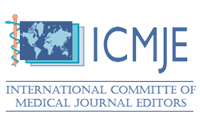Beliefs of Physicians and Nurses Toward Infant Teething: A Cross Sectional Survey
Abstract
Background: A tooth eruption is a process that buds move from the initial development place in alveolar bone to the final performance place in the oral cavity. The present study aimed to investigate the attitudes and common opinions of teething between physician and nurse groups.
Objectives: The current analytical study aimed to determine child health professionals’ attitudes toward the symptoms of tooth eruption.
Methods: A random sampling included general practitioners (GPs), dentists, pediatricians and children nurses. Data were collected using a researcher- made questionnaire. There were 213 respondents, 14 pediatric specialists, 74 general practitioners, 45 dentists and 80 nurses filled out the questionnaires. After completing the questionnaires, information was transferred to the statistical software SPSS16 and analyzed using ANOVA and Chi-square test.
Results: Participants were nurses, general practitioners, pediatric dentists and pediatricians 37.6%, 34.7%, 21.1% and 6.6%, respectively. The number of female nurses was much higher than those of other staffs. Nurses were the youngest group and the pediatricians were the eldest. The staffs had common attitudes toward earache, ear infection, cough and red cheek. The majority of staffs in each group disagreed with the fact that earache, ear infection, cough and red cheek were teething symptoms. Biting and irritability were two specific symptoms that pediatricians agreed with, this pattern for nurses was gum rubbing and biting, and for general practitioners was gum rubbing and irritability. Biting and gum rubbing were two symptoms that dentists were interested in. Pediatricians did not agree with some of the symptoms such as urine malodor, green stool, ear infection and constipation.
Conclusions: Almost many pediatric health professionals believe that teething causes a wide range of symptoms, most of which are minor and related to discomfort rather than physical illness. The current study findings were consistent and in contrast with those of many other studies on professional beliefs of teething symptoms. Such beliefs by various staffs may create optimal management of common patterns of illness during teething.
 Home
Home Archive
Archive Search
Search Site Menu
Site Menu Share this:
Share this:





